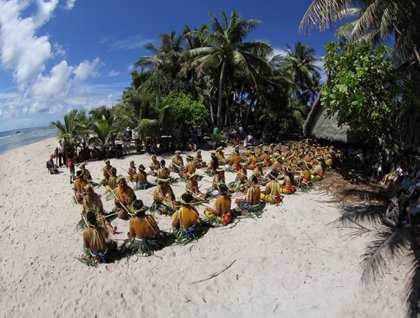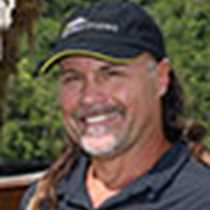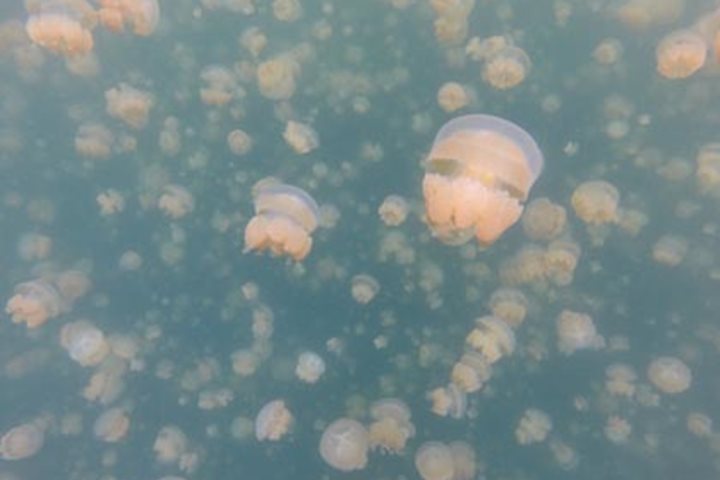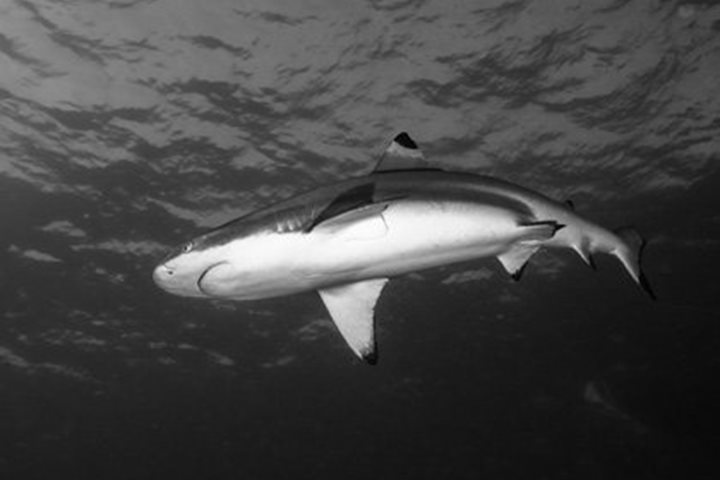Shortly after sunrise with a gentle rolling swell to our backs, the legendary island of Satawal sat off our bow. Located in the Caroline chain of Micronesia, this tiny island has been renowned for millennia as the home to Oceania’s best navigators. Master Navigator Mau Piailug has largely been responsible for teaching the lost art of traditional navigation to the eager young men of neighboring islands.
Rising defiantly from the ocean depths, Satawal possesses no lagoon or safe harbor adding to difficulties of visiting this outlying island. The crystal clear waters beckoned for an early morning dive. Gentle currents fed the waving arms multi-colored crinoids which are distant relatives of starfish and sea urchins. Schools of purple anthias competed for tidbits of plankton and retreated to the protection of the healthy reef as we neared. As we surfaced, curious children approached in dug-out canoes to inspect the unusual blowers of bubbles. With bright smiles, the young boys dove into the depths without mask or fins, though self-assured from a lifetime spent in this Micronesian playground.
The Satawalese had prepared a grand performance with men and women segregated into distinctive troupes. The rhythmic chants under swaying palm trees cast a welcoming ambience in this Pacific Island Paradise. When the performances had ended we were encouraged to witness the ancient arts which continue to provide the source of Satawalese pride. Under the shade of a palm thatch roof we admired the skill and patience required to build a sailing canoe from the forest materials. Carefully braided coconut fiber rope was lashed to planks to add desperately needed freeboard to the dugout’s hull. The sap of the breadfruit tree was applied to all joints to insure water-tight seals. The fibrous leaves of the Pandanus tree were woven into sail to carry the vessels on the road of the winds.
And then the moment we’d all been hoping for… an invitation to join the veteran crew aboard the open ocean canoes. A team of muscular young men gently guided the canoe onto the beach where we clamored aboard for a rare glimpse into Micronesia’s past. Wooden paddles dug into the shallow water and guided the surprisingly responsive canoe through the gentle surf. Sails were raised to the chorus of trumpet shells, and the craft took on a new life as we surged over the swells. After passing the Western edge of the island, we’d all expected the canoe to bank sharply and sail back towards the white sand beaches. Instead, the sail was dropped and carried from bow to stern. A wooden rudder was slipped into the water where moments before the bow had cut the waves. It slowly dawned on us that the canoe could be sailed in either direction, as our esteem for craftsmen and navigators continued to grow.
As the canoe sailed back towards the National Geographic Orion audible puffs of air were being blown all around us. We peered into the water in time to catch a glimpse of the sleek black forms of a rare cetacean, the short-finned pilot whales. With a globular head and stocky body, these 20’ long free divers make their living by hunting for deep sea squid in the warm waters of the tropics. Frequent visitors to oceanic pinnacles and deep sea trenches, they roam the planet in familial pods in search of new feeding opportunities and potential mates. The elusive cetaceans dove in unison and disappeared from sight, leaving Satawal in their wake.
With the setting sun we boarded the National Geographic Orion, turned to port and slipped away from the charming shores of Satawal. Tomorrow will bring a new group of islands and another host of adventures. As was the case with our pilot whale friends, migration is the rule for our class of oceanic wonderers.









